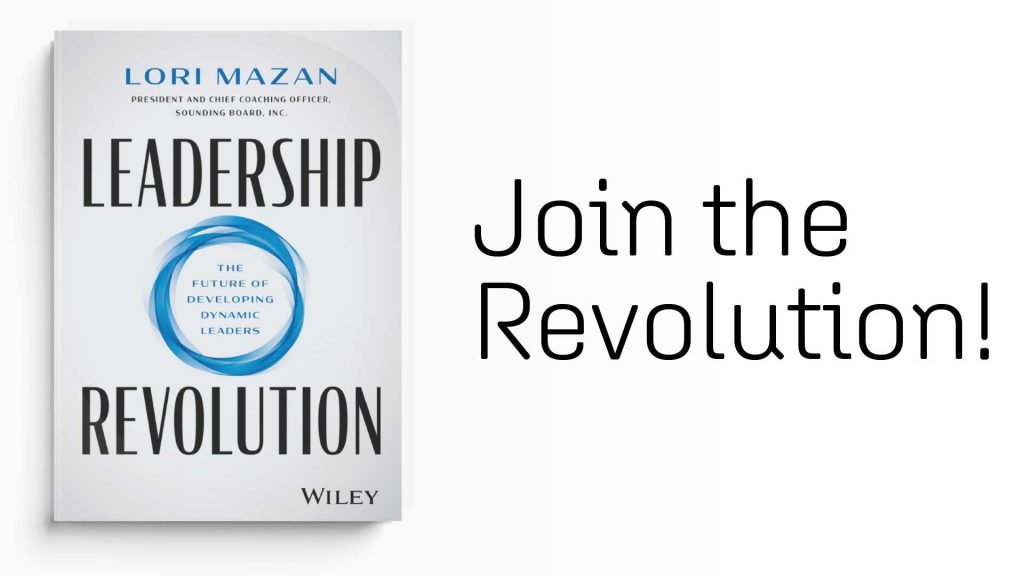This is the first of a five-part series focused on advancing DEI initiatives through leadership development.
Despite public-facing declarations of a commitment to diversity, equity, and inclusion (DEI), it remains clear that companies are failing to reach gender parity in leadership. For most, this failure stems from an ambivalent view of DEI — organizations view it as a “nice-to-have” rather than a necessity, and therefore do not commit to the work necessary to make real change. The programs they may put in place do not address the underlying systemic issues or mindsets and behaviors that reside in leaders — who set the true tone for diversity and inclusion within the organization. Many companies that do actively try to address it, experience similar lackluster results because they rely on traditional leadership development programs, which are ineffective for today’s workforce. The numbers don’t lie: Women hold only 1 in 4 C-suite positions, and women of color occupy 1 in 20, according to McKinsey & Company’s latest Women in the Workplace report.
Traditional leadership development programs — those directed towards women, and even those which are not — are not working. In the past, leadership development was centered around training, seminars, workshops, or similar one-and-done activities. While these may work for more straightforward skill-building or knowledge transfer, these standardized programs lack the personalization and context to affect real change within an organization.
IBM states in its 2021 Women, leadership, and missed opportunities report, the tools organizations are “employing aren’t getting at the fine edges — those mindsets and behaviors that create a welcoming, inclusive corporate culture and deliver business advantage.” Beyond basic design flaws, traditional women in leadership development programs are riddled with insincere motivations, false assumptions, and a deficit mindset.
Insincere motivations
Consider, too often corporations pay lip service to DEI to improve their public reputation. As social justice movements continue to gain support within the public eye, consumers, investors, and employees are pressuring organizations to take a stand. This push for corporate social responsibility has motivated many businesses to place women into leadership programs, but often without the genuine commitment needed to make real change.
Unfortunately, this is only one example of insincere motivation for creating women’s leadership development programs. Companies may also implement DEI programs in response to allegations of discrimination and/or sexual misconduct. Programs established this way are reactionary, ineffective, and set a poor precedent. They often focus on “what not to do” in order to avoid future accusations and litigation and do nothing to develop women leaders and change the status quo.
Further, when participants believe their employer has insincere motivations for promoting DEI, “they may try to undermine DEI initiatives or even withdraw support,” said Lily Zheng, author of DEI Deconstructed. When women in leadership development programs are launched in response to false motivations, they are often not implemented with the resources and support they need to succeed. Worse, traditional models lack accountability and measurability — both of which are necessary to enact meaningful organizational change.
Effective programs emphasize a culture of continual learning for organizational growth. For example, leadership coaching challenges leaders to stretch capabilities like communication, interpersonal skills, and self-awareness — which are crucial to creating an inclusive workplace. Coaches often encourage leaders to expand their view by inviting different perspectives from coworkers, resulting in greater awareness and an increased capacity for empathy.
False assumptions
Traditional women in leadership programs make wide, sweeping assumptions about the cause of the problem (i.e. lack of viable women candidates). They base their approach on false narratives born from second-generation gender biases such as:
- Few women want leadership roles
- Many women lack leadership capabilities
- Most women lack the confidence needed to advance in their careers
These assumptions do not match reality. The aforementioned McKinsey & Company found that 59 percent of Black women aspire to fill top executive positions, while 49 percent of all women desire the same. Likewise, several studies have indicated that women are more likely than men to have greater emotional intelligence, self-awareness, and self-control — all essential qualities for effective leadership.
Further, the narrative that women lack confidence is problematic in several ways. First, research has shown that when women are faced with gender discrimination in the workplace, such as microaggressions, they are more likely to question their own competence. While “imposter syndrome” has been studied and discussed widely, the concept “puts the blame on individuals, without accounting for the historical and cultural contexts that are foundational in how it manifests in both women of color and white women,” according to Ruchika Tulshyan and Jodi-Ann Burey in their 2021 article “Stop Telling Women They Have Imposter Syndrome.”
Second, when women display assertiveness and confidence, they are often perceived as difficult and unlikeable. In order to succeed in the corporate world, women must navigate the double bind — the balance between warmth and competency. As a recent University of Michigan study describes it, “women must never stop adapting to gendered expectations.”
Traditional leadership development programs focused on uplifting women in the workplace often operate on these incorrect assumptions. They are often designed to “fix” women and mold them into leadership styles based on patriarchal models, when nothing of the sort is necessary or desirable.
Meanwhile, leadership coaching does not aim to “fix” women, but to build out and enhance their existing capabilities. Likewise, coaching can help to dim these biased assumptions by developing leaders’ — both men’s and women’s — emotional intelligence and ability to lead inclusively.
A deficit mindset
Biased, incorrect gender assumptions feed into the deficit mindset baked into traditional leadership development programs. Programs with a deficit mindset work to train women to develop leadership styles more closely associated with male leadership.
This deficit mindset — the view that women do not already possess leadership capabilities based on traditional (white) male paradigms, and therefore must be given instruction — undermines any good traditional programs might achieve because they ask women to do more while letting corporations off the hook. As Iyad Uakoub, senior director, behavioral science, Sounding Board said, “Most DEI initiatives are symptomatic solutions to a systemic problem. You’re treating the symptoms but ignoring the root cause.”
Lauren Hutto, director of coaching excellence at Sounding Board puts it another way. “It’s not that women lack leadership capabilities,” she explained. “They lack the opportunities to demonstrate those capabilities.”
Adopting a deficit mindset also ignores the complexities and dynamics of women in the workplace. As a recent Chief Learning Officer article pointed out, “traditional programs teach a skills-based curriculum rather than experience-based.” Without contextualizing women’s leadership development, it ignores a core part of their identity.
Alternatively, leadership coaching is based on contextual development. Coaches work with leaders or potential leaders to explore leadership within the context of their identity. Coachees are encouraged to experiment with different leadership styles — beyond patriarchal paradigms — while enhancing existing capabilities. As a recent Harvard Review article stated, “Effective leadership development must work with and transform not just leaders’ performance of concrete job tasks, but their whole selves.”
Moving forward: A better approach to women in leadership development
Traditional women in leadership development programs are great in theory, but not in practice. They’re built on faulty assumptions and mindsets. In order to truly make an impact, companies must adopt a more dynamic approach to leadership development that enhances the capabilities of all leaders — not just women — to enable a more diverse and equitable workforce. “The most effective practices in leading people can also be some of the most effective practices to honor diversity and create a culture of inclusion,” Lauren Hutto said. “DEI is the application of good leadership in practice,” Iyad Uakoub added.
By taking a contextualized approach, like leadership coaching, organizations can expand the scope of their DEI efforts beyond superficial inclusion, practice genuine equity, and ultimately ensure the success of their company — and a surfeit of women in leadership roles.
For that to happen, companies must first be honest with themselves and their stakeholders about the true cause of the problem — a deficit mindset and a lack of accountability. This includes acknowledging that it is not just women who are held back by these issues, but the organization as a whole.
Mary Carder is a content writer for Sounding Board.











